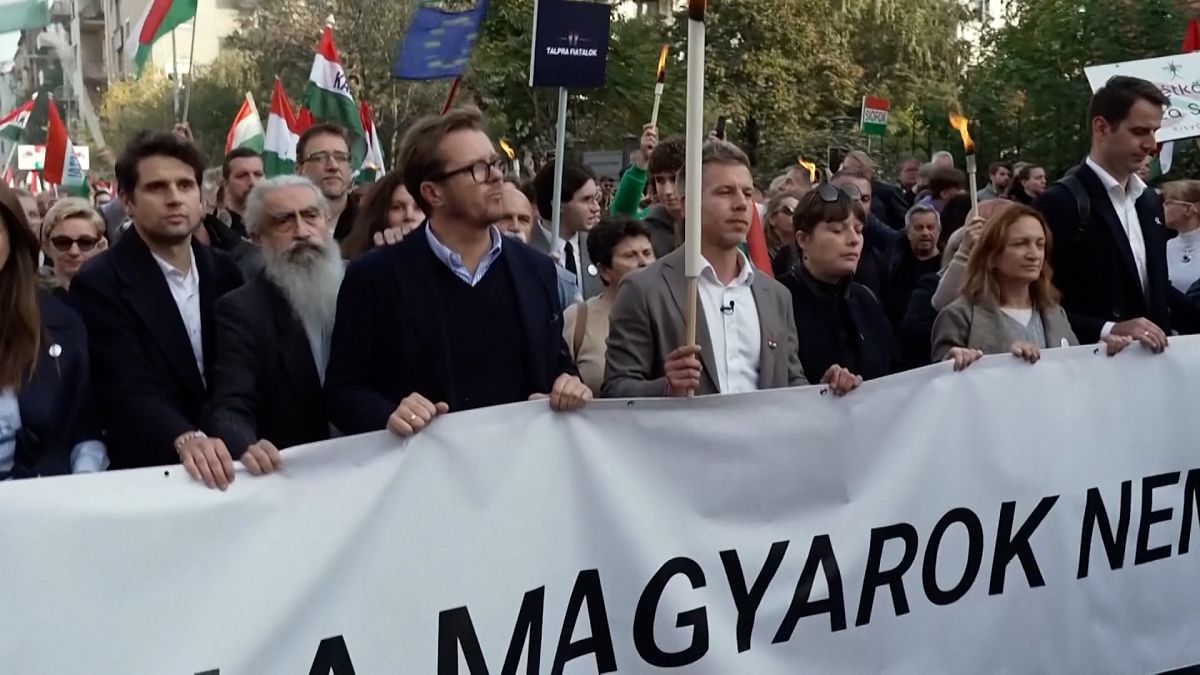In Hungary, there has been a recent rise in discontent with the leadership of Prime Minister Viktor Orbán, as evidenced by a protest led by opposition leader Péter Magyar and his TISZA party. Recent polls have shown TISZA surpassing Orbán’s FIDESZ party for the first time in nearly two decades, reflecting the growing support for Magyar and his party. The poll, conducted from October 9 to 15 with 1,000 respondents, indicates that TISZA has overtaken FIDESZ for the second consecutive survey.
During the protest, Magyar criticized Orbán for presiding over what he called a “moral and economic crisis” in Hungary. This criticism has struck a chord with many voters who are disillusioned with Orbán’s leadership and policies. In response, Orbán has accused the European Union of plotting to install a puppet regime in Hungary, deflecting attention from the growing dissatisfaction with his own government.
Looking ahead to the national elections scheduled for 2026, it appears that TISZA is gaining momentum and could pose a significant challenge to Orbán’s ruling party. The leadership of Magyar and the growing support for his party suggest that there is a shift in the political landscape of Hungary. With the upcoming elections, it will be interesting to see how the dynamics between TISZA and FIDESZ play out and whether there will be a change in the country’s leadership.
The protest organized by Magyar and TISZA is a clear indication of the changing political climate in Hungary and the growing discontent with the current government. As more voters express their dissatisfaction with Orbán’s leadership, TISZA is capitalizing on this sentiment and gaining support. The upcoming national elections will be a crucial moment for both parties as they vie for control of the country’s government.
As the momentum for TISZA continues to grow, Orbán and FIDESZ will need to address the concerns of the Hungarian people and adapt their strategies to retain support. The accusations against the European Union and the political rhetoric may not be enough to sway voters who are looking for tangible solutions to the issues facing Hungary. The success of TISZA in the polls indicates that there is a real demand for change and a fresh approach to governance in the country.
In conclusion, the protest organized by Péter Magyar and TISZA signals a shift in the political landscape of Hungary, with growing discontent with Orbán’s leadership. As TISZA gains momentum and surpasses FIDESZ in the polls, it is clear that there is a desire for change among the Hungarian electorate. The upcoming national elections in 2026 will be a key moment for both parties and will determine the future direction of the country’s government. It remains to be seen how Orbán and FIDESZ will respond to the challenge posed by TISZA and whether they can retain their hold on power in the face of increasing opposition.










